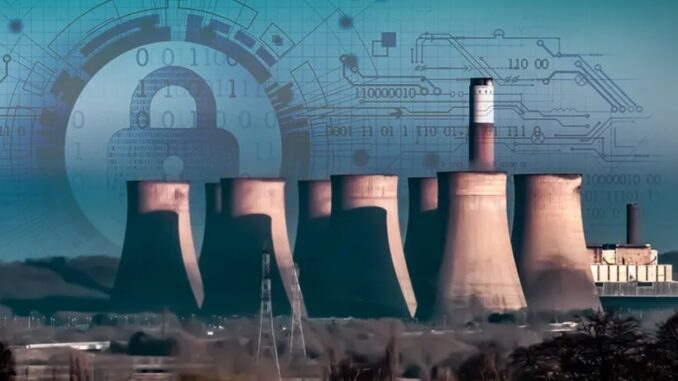
Along with most everyone else in the energy market I have been of the opinion that coal power stations in the UK must close by law by 1 October 2024. I have learned that this is not in fact correct.
In late 2020 the Government consulted with the market on bringing forward the closure date from October 2025 to October 2024. The 2025 date had never been passed into law, but it was Government policy and reflected changes to Capacity Market Rules which were designed to limit the participation of coal from Winter 2024. All of this culminated with an announcement in June 2021 that the Government would “will introduce new legislation to do this [bring forward the closure date to 1 October 2024] at the earliest opportunity”.
The Government was so confident that coal would no longer be required by Winter 2024 that it said it would not reserve emergency powers for the Secretary of State to delay the date of needed for security of supply reasons. I commented in a previous post that I had been unable to locate the final legislation to see whether that had remained the case when it finally passed into law.
I have now discovered that no such legislation has ever been brought before Parliament, meaning that the UK does not in fact have any mandatory closure date for coal-fired electricity generation.
I collaborated with Matt Oliver at the Telegraph to ascertain the position from DESNZ, which confirmed that:
“As all UK coal generators have already committed to phasing out their coal operations, it is not necessary to legislate to deliver on this commitment,”
– Department for Energy Security and Net Zero
DESNZ went on to say that after October 2024 Capacity Market rules will make it un-economic for coal to continue running. This statement likely refers to the Capacity Market Emissions Limits, Rules which derive from the Energy Act 2013 and are amended by making changes to this Act, either through a full legislative process, or, for smaller changes, through the use of Statutory Instruments.
“The Rules require compliance with the carbon emission limits by all ‘new’ capacity (i.e. when considered against the 4 July 2019 date introduced by the Electricity Regulation, that is generating units which are Fossil Fuel Components that have a Commercial Production Start Date on or after 4 July 2019) participating in all future auctions and Delivery Years, and by all ‘existing’ capacity (i.e. with a Commercial Production Start date before 4 July 2019) in respect of auctions for the Delivery Year commencing on 1 October 2024 and all subsequent Delivery Years.”
There are two carbon emissions limits that apply in the Capacity Market to fossil-fuel generators, and a generator must meet at least one of:
- 550g of CO2 of fossil fuel origin per kWh of electricity generated (“the Fossil Fuel Emissions Limit”); and
- 350 kg CO2 of fossil fuel origin on average per year per installed kWe (“the Fossil Fuel Yearly Emissions Limit”).
Ratcliffe burns hard coal, or anthracite, which has an Emission Factor of 98,300 kg CO2 /TJ and a Net Calorific Value of 26.7 TJ /gigagram. In order to meet the yearly emissions limit, and assuming a typical thermal efficiency of about 35%, this would mean Ratcliffe could only run for about 345 hours a year ie 4% of the time, which would indeed be uneconomic, unless an alternative income source is provided.
The lack of a statutory closure date for coal means that National Grid ESO is free to create a new coal contingency product. It is my opinion that any such coal reserve would need to be a year-round product rather than just a winter product – Ratcliffe has frequently run in the summer when wind output is low.
This could also apply to the two remaining units at Drax. ESO has said it is in ongoing discussions for Drax to participate in a coal contingency for this coming winter clearly signalling a desire to continue with the scheme to support security of supply, although Drax insists that no such discussions are underway and that its coal units have begun to be de-commissioned. It is my understanding that the de-commissioning process has indeed begun but has not progressed to a degree that could not be reversed. Perhaps if the parties understood that this reserve could continue beyond this winter and could apply year round, the prospect would be more appealing.
While I’m sure the Government is embarrassed that the much spoken of statutory closure date for coal does not actually exist, this is good news for energy security. The Government could choose to amend the Capacity Market Emissions Limits to make the ongoing regular commercial operation of Ratcliffe economic, or it could encourage ESO to develop a coal reserve which would keep both Ratcliffe and Drax open and available for use. I suspect that maintaining the current status quo would be cheaper for consumers, but it fits less well with the Government’s net zero narrative.
Either way, this is a win for consumers since it improves security of supply. Personally, I think the Government should accept that from a climate change perspective, one or two coal power stations is irrelevant, but from a security of supply perspective they continue to be useful. Against a backdrop of nuclear closures over the next few years, it would be prudent to keep this option open. Unfortunately, it’s difficult to move from the fanfare of closing coal, to a “nothing to see here” narrative, but that’s the way this should be pitched. Coal-fired generation has been decimated in the UK, the Government should take the win and not fret about the sliver that remains.
ENB Top News
ENB
Energy Dashboard
ENB Podcast
ENB Substack



